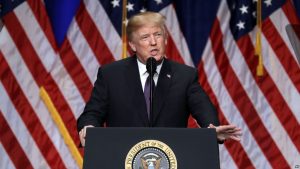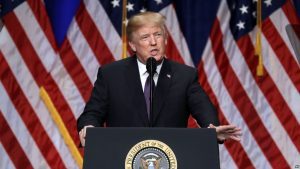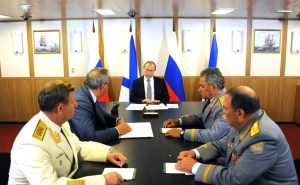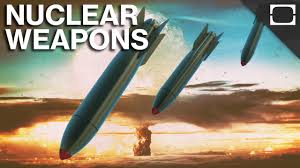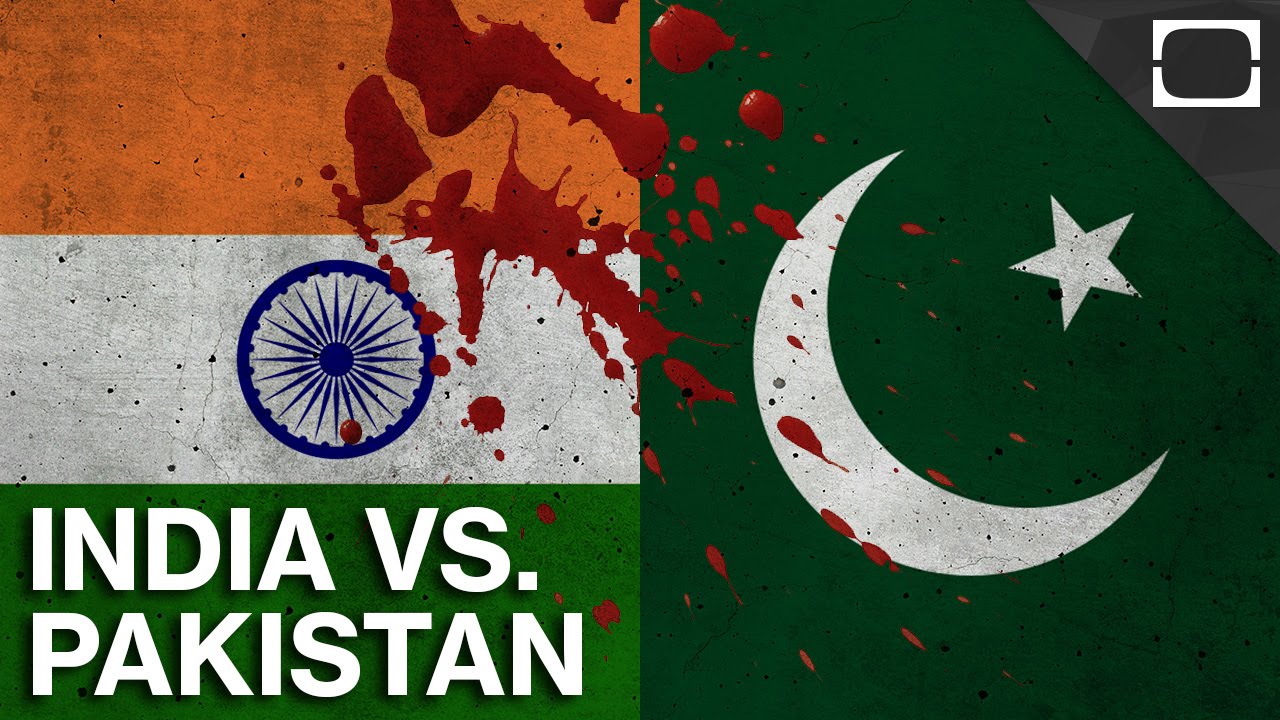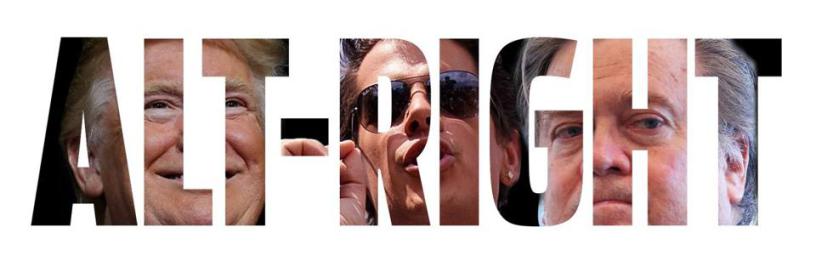Throughout the history of the United States, presidents have brought forward their own security strategies in order to promote effectiveness and dissuasiveness in foreign policy. As circumstances alter rapidly in the world isolationism and activism have been two fundamental instruments in U.S. foreign policy.
President Donald Trump delivers a speech on national security, Monday, Dec. 18, 2017, in Washington. (AP Photo/Evan Vucci)
Many of previous presidents conducted isolationist policies such as George Washington, and many of others have conducted activist policies in foreign policy such as George W. Bush. Mr. Obama could be seen as the last implementer of some form of isolationism. On the other hand, in the recent years, rising rivalry conspicuously began to be argued in domestic affairs and seen as a critical problem for American leadership. So, it seems that, Trump’s administration does not want to ignore the risk toward the worldwide dominance of U.S.
Critics Over Obama’s Administration
When Mr. Obama’s presidency taken in hand, it’s obvious that during his era, national security strategies of U.S. were much more inclining towards ”Soft Power’‘ in an effort to appease Anti-Americanism. According to some, Obama’s presidency has prevailed reversing negative considerations toward U.S. In other respects, current president Trump is been exerting his boldness by enhancing the sense of ”Making America Great Again”.
As President Trump addressed in his national security strategy speech, he brought to the fore front the notion of ”America First”. This stands as intrinsic part of his doctrine. Also in the newly decided Security Strategy, preserving American citizens’ rights are depicted as a sworn duty of the U.S. Government. Many people see Obama’s presidency as an era of deterioration of America’s dominance meanwhile others favor his policies. Allegedly, his policies have enhanced Russian influence especially in Syria and even in the Black Sea in parallel with the annexation of Crimea in 2014. Therefore, it is not so hard for many to advocate Trump’s policies. During his campaign, he had showed his eagerness to convert foreign policy from Isolationism into the Activism.
As he stated numerous times, it is the right time for America to consider effective transformation in many fields such as economy, health care system (cancellation of Obamacare) and so on. According to many Republicans, predecessor’s mistakes in both domestic and foreign affairs, overwhelmingly coerces U.S. to handle with current and forthcoming circumstances. Let’s look into Trump’s commitments in his security strategy.
Dwelling on Facts
It is a striking point that during the announcement of the Security Strategy, Mr. Trump labeled Russia and China as ”Rival” powers. Also he added that they are willing to shake US dominance utterly. That could be a correct indication with many aspects. United States is the world’s leading state on military spending with approximately $600 billion (it has been decided to be increased by $80 billion) whilst Russia and China have around $200 billion combined. It is a well-known fact, Russia and China are about to increase their military and economic strength in parallel with their regional and global goals in the future.
Especially since 2015, Russian naval production is been increasing tremendously. Only within 2017, in parallel with the Russian Naval Doctrine ratified by Vladimir Putin and published in 20 July 2017, Russians aimed to include around 30 new modern warships to their naval forces in order to gear up the capacity to challenge with the U.S. dominance in the seas. Yet, U.S. Naval Forces has worldwide impact thanks to its active 11 Aircraft Carriers while Russia and China combined only have 2 Aircraft carriers in service.
Putin, Rogozin and Shoigu discuss the new Naval Doctrine of Russia
Education, Economy and R&D
For a nation, almost all of the success comes from educational development and innovation rate of communities. When U.S. education system observed, the knowledge generation looks better than any other country. United States has 18 universities in the best 50 in the overalls meanwhile China has 6 and Russia has none (Lomonosov Moscow State University has the highest ranking in Russia, 95th). This is not the only comparison. Also most of the world innovative companies are located in the Silicon Valley.
Eventually, the development in education will reflect the economic capability and a substantial element on economic growth based on technology and innovation. When the data is observed, U.S. expenditure on Research&Development seems around $480 million in PPP. This is the highest expenditure on R&D all around the world. Chinese expenditure to R&D seems around $370 million. This is the second biggest amount after U.S. and numbers clearly demonstrates that U.S. leadership is still continuing in many fields. However, China’s growth of potential has been gaining momentum every year thanks to its high labor force with around 1.40 billion population (2017) and governments correct tax regulations towards Foreign Direct Investors.
Also, there are many reasons for investors to choose China. Towards the end of the 20th Century, China has started the liberalisation process and trying to entice foreign firms by making circumstances convenient for them. China would get ahead of the U.S. economy in the forthcoming decades. In addition to this, China’s lead on global economy is ”inevitable” to some. Donald Trump’s nascent tax reform could be seen as kind of an attempt of clawing back the financial advantage from the hands of China. The reform includes decreasing percentage of taxation in case of firms moving back to U.S.
A Sworn Component to Soft Power: Culture
After all of those facts taken in hand, let’s take a look at the issue from a different perspective. The importance of China in economic and also we could add military field, has been increasing sharply. Yet, these are not the only competitive fields. Also, culture is such a key instrument on rising influence. Also, it is a significant advantage that U.S. holds the world’s biggest and effective cultural tool called Hollywood. The U.S. culture is able to stretch and spread its existence. This is another reality that needs to be taken into account by rivalry candidates. The Hollywood is in the forefront in the cinema sector across the world and that accelerates spread of US identity.
This way, U.S. identity obtains a vital chance to embrace with the people with another identity. Accessibility is a superior necessity to a nation. Throughout the world, almost all sectors are being dominated by American firms. If the rivals are willing to gain leverage in any field, than the success requires an efficient mobilization backed up by a long-term planning.
KFC and McDonald’s signs in Xiamen, China. Photo: sly06 / Flickr Creative Commons
As a conclusion, it is not rational for rising rival powers to acquire head to head capacity in worldwide sphere in a short period. The huge potential of the east would be worth pondering in following decades. A well utilization of potential in the long-term could have an impact upon roles.
Mustafa Aydogan is currently working on topics related to Russian Eurasianism and Middle East. He has a Bachelor degree from Bahcesehir University Istanbul and he is keen on pursuing an academic career in the future.

